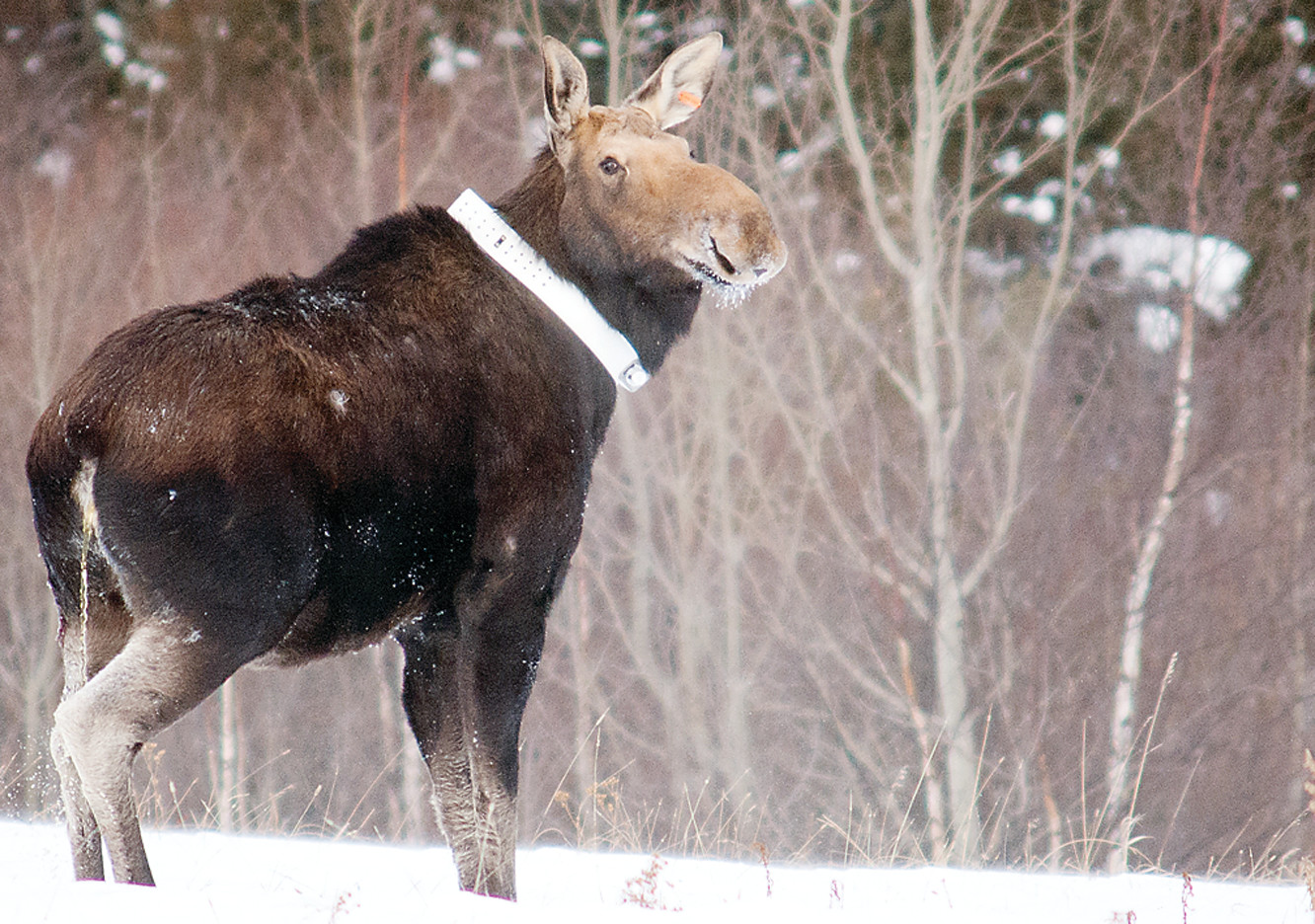Support the Timberjay by making a donation.
DNR wraps five-year study of region’s moose
Researcher says there’s no “smoking gun,” as several factors appear to be contributing to the population decline
REGIONAL— After five years of effort, the field portion of the state’s ongoing GPS-collared moose study has come to an end. And while researchers will continue to sift through and interpret their …
This item is available in full to subscribers.
Attention subscribers
To continue reading, you will need to either log in to your subscriber account, or purchase a new subscription.
If you are a current print subscriber, you can set up a free website account and connect your subscription to it by clicking here.
If you are a digital subscriber with an active, online-only subscription then you already have an account here. Just reset your password if you've not yet logged in to your account on this new site.
Otherwise, click here to view your options for subscribing.
Please log in to continue |
DNR wraps five-year study of region’s moose
Researcher says there’s no “smoking gun,” as several factors appear to be contributing to the population decline
REGIONAL— After five years of effort, the field portion of the state’s ongoing GPS-collared moose study has come to an end. And while researchers will continue to sift through and interpret their data over the next few years, one of the conclusions is already clear: the decline of the moose population in northeastern Minnesota has no single, identifiable cause.
“Our study has highlighted the complexity of factors affecting moose health and, to the disappointment of some, shows no clear smoking-gun,” wrote Michelle Carstenson in an email last month to fellow researchers and others.
“Wolves are not the sole drivers of the decline in the adult moose population, although they play an important role in mortality,” wrote Carstenson. At the same time, she wrote, wolves appear to be playing a role that biologists commonly associate with this large predator, preying primarily on the sick and older moose in the adult population. According to Carstenson, that’s “exactly what these predators should be doing in this system.”
Where wolves appear to be having the most deleterious effect, however, is with the young, according to Carstenson. “As documented by the concurrent work on calf survival, wolves are playing a major role in calf mortality and reduced recruitment,” she said.
At the same time, notes Cartenson, parasitic infections, mostly brain worm and liver flukes spread by whitetail deer, have a “broad effect, either causing direct mortality or reducing overall fitness, on moose survival.” In other words, moose affected by brainworm, in particular, could well be more vulnerable to predators or even accidental deaths that healthy moose.
“We still have much work to do on understanding how potential ultimate drivers (body condition and climate) may be influencing a moose’s ability to handle various parasite loads and why it tips the scale for some, while others seemingly survive better,” wrote Carstenson.
Over the five-year period of the study, the overall annual survival rate for the roughly 100 moose originally collared for the study averaged 85.3 percent, which is just slightly below the 88-92 percent rate considered typical elsewhere in North America. But a related study on moose calves demonstrated very high mortality rates, primarily due to wolf predation, which appears to be limiting moose reproductive success.
Among adult moose, wolf predation and parasites were each responsible for 30 percent of moose mortality, while bacterial infection accounted for another 20 percent. Bacterial infections were either related to ongoing health issues, or were the result of wolf attacks. Another ten percent died from unidentified health issues. Accidents, hunter harvest, and childbirth accounted for the remaining moose deaths (see graphic).
The study was originally designed for five years and with a sample size of over 100 animals. The study did last five years, although the sample size diminished significantly in the final years. Gov. Mark Dayton signed an executive order in 2015 that halted further collaring of all moose by the DNR after a Timberjay investigation revealed questionable actions by top DNR researchers in the handling of moose calf abandonments.
A year ago, the study still had 44 collared moose alive and transmitting data, but researchers have since been attempting to trigger automatic release mechanisms to recover the detailed GPS data stored on the collars. Only three collars remained on active moose as of last month.
But the collars appeared to have a significant error rate, with nearly 60 having failed over the years. Researchers could not recover those collars so they will never know the fate of those moose or recover the data stored on their collars.






